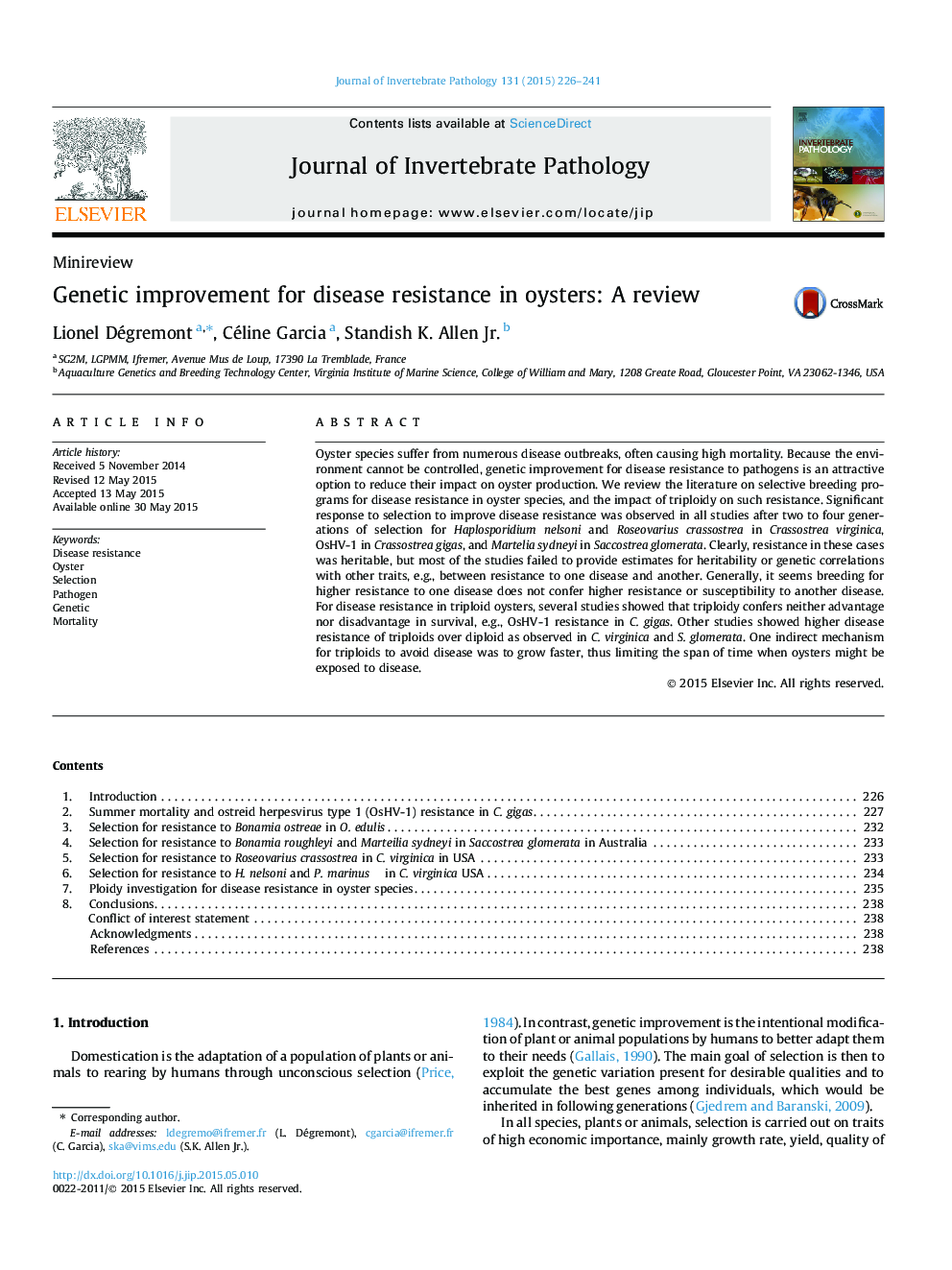| Article ID | Journal | Published Year | Pages | File Type |
|---|---|---|---|---|
| 4557541 | Journal of Invertebrate Pathology | 2015 | 16 Pages |
•Disease related mortality affects several oyster species.•Positive response to selection to enhance disease resistance.•Selection for disease resistance does not confer resistance to other disease.•Triploidy in oysters does not alter disease resistance in comparison to diploidy.
Oyster species suffer from numerous disease outbreaks, often causing high mortality. Because the environment cannot be controlled, genetic improvement for disease resistance to pathogens is an attractive option to reduce their impact on oyster production. We review the literature on selective breeding programs for disease resistance in oyster species, and the impact of triploidy on such resistance. Significant response to selection to improve disease resistance was observed in all studies after two to four generations of selection for Haplosporidium nelsoni and Roseovarius crassostrea in Crassostrea virginica, OsHV-1 in Crassostrea gigas, and Martelia sydneyi in Saccostrea glomerata. Clearly, resistance in these cases was heritable, but most of the studies failed to provide estimates for heritability or genetic correlations with other traits, e.g., between resistance to one disease and another. Generally, it seems breeding for higher resistance to one disease does not confer higher resistance or susceptibility to another disease. For disease resistance in triploid oysters, several studies showed that triploidy confers neither advantage nor disadvantage in survival, e.g., OsHV-1 resistance in C. gigas. Other studies showed higher disease resistance of triploids over diploid as observed in C. virginica and S. glomerata. One indirect mechanism for triploids to avoid disease was to grow faster, thus limiting the span of time when oysters might be exposed to disease.
Graphical abstractFigure optionsDownload full-size imageDownload as PowerPoint slide
